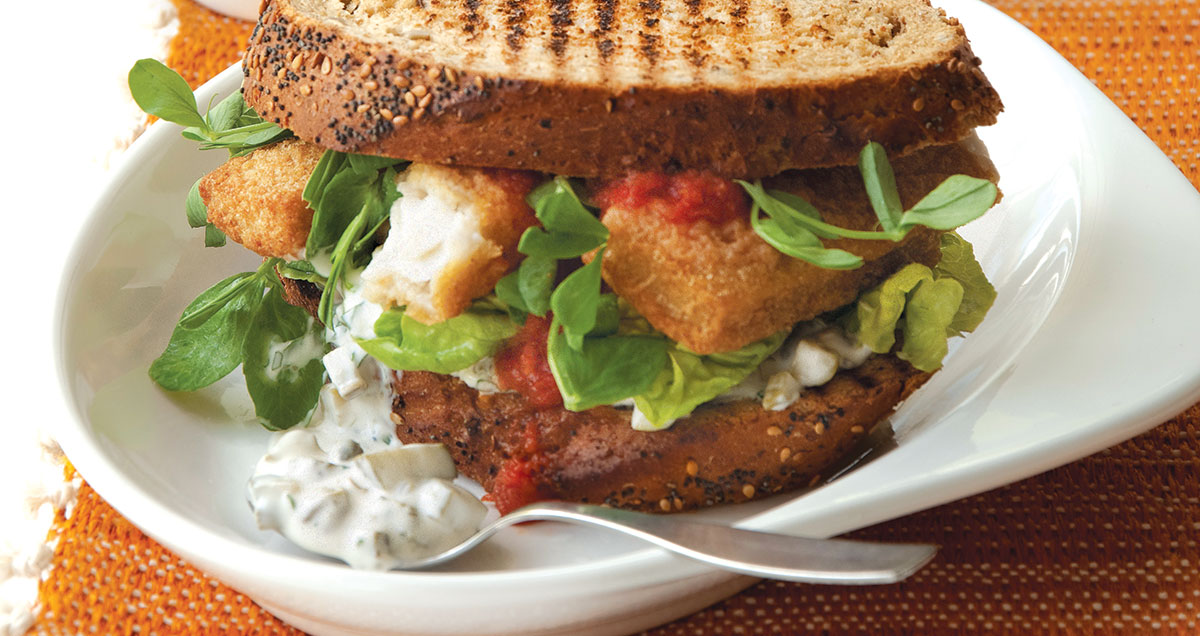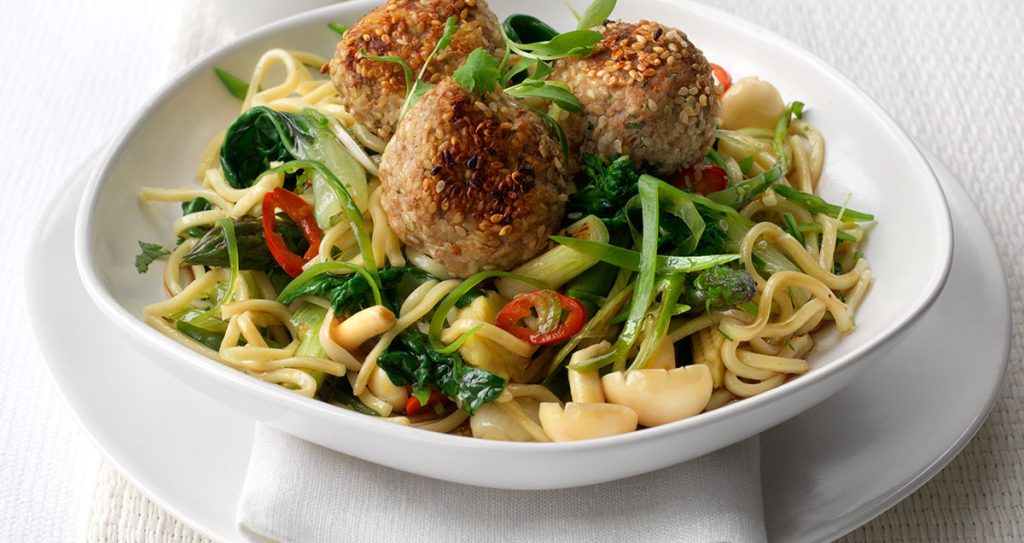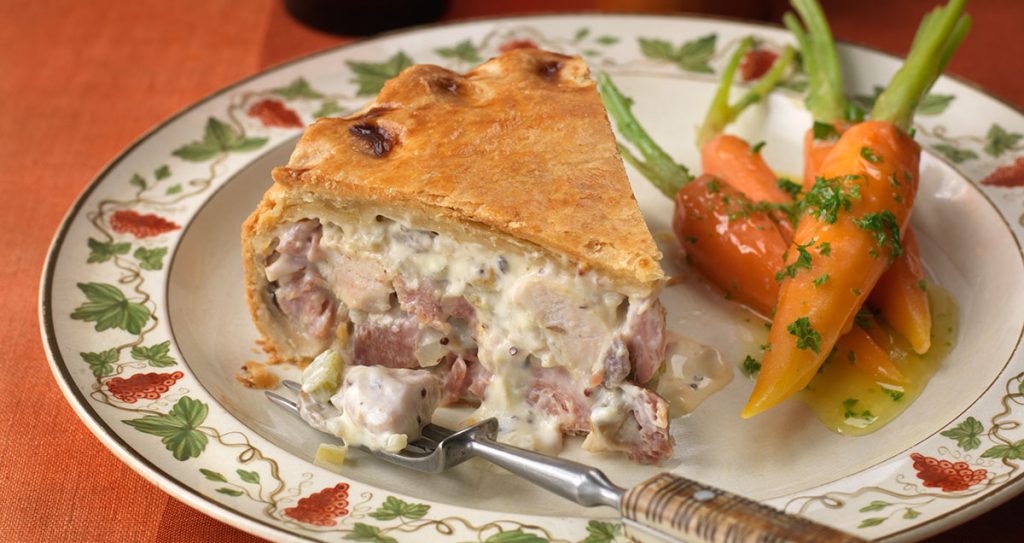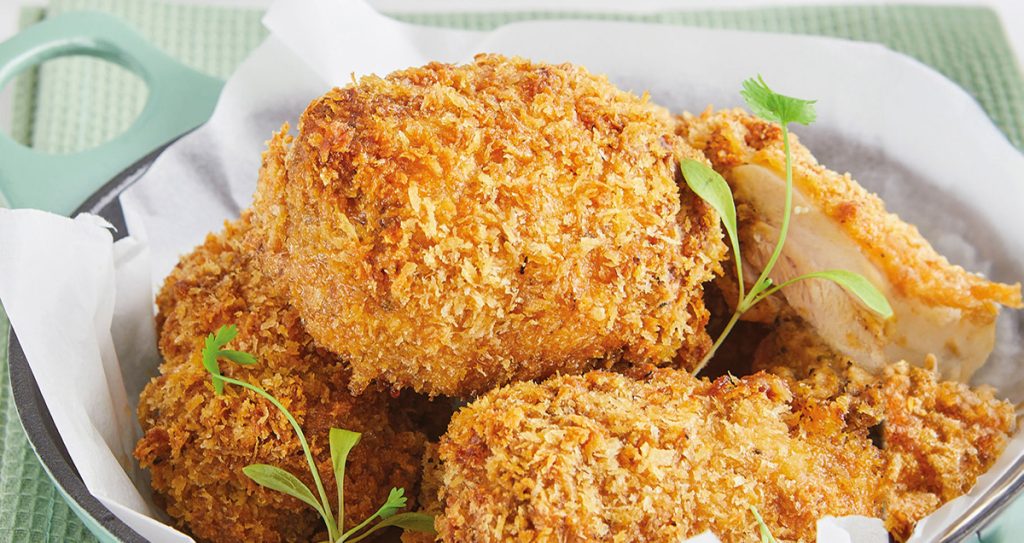, Step by step
Fish finger sandwich with tartare sauce

Homemade tartare sauce and tomato ketchup transform this simple sandwich into a real treat.
Method
-
Step 1
Heat the oven to 170°C and cook the fish fingers.
-
Step 2
Place a griddle on the stove over medium heat, ready for the bread slices. Then separate the leaves of the lettuce and give them a good wash. Drain and reserve.
-
Step 3
To make the tartare sauce, mix the crème fraîche, gherkins, capers, shallot and parsley together. Set aside.
-
Step 4
Now grill the slices of bread on the griddle to give them a slightly toasted and marked appearance. Lay 6 slices onto a chopping board and spread over the tartare sauce. Place some lettuce leaves on each. Use 2 fish fingers per portion and place them onto the lettuce by cutting in half to produce 4 pieces.
-
Step 5
Spoon over some ketchup and top with a sprinkle of the pea shoots. Place the remaining slices of bread on top of each and serve.
Nutrition
Wholegrain types of starchy foods like bread, breakfast cereals, pasta and rice contain more fibre compared with the refined white versions. They also tend to be richer in some nutrients—minerals (magnesium, iron and zinc), B vitamins and vitamin E.
Fibre is essential for a healthy digestive system. Average amounts consumed in the UK are relatively low, which is why nutritionists are encouraging people to eat more wholegrain products—aiming for around three servings a day.
The term wholegrain describes a product that contains all three parts of the cereal grain—the bran (the outside), the endosperm (the starchy centre) and the germ (which is rich in nutrients).
Wheat (wholemeal and some seeded breads; breakfast cereals; bulgur wheat), oats (porridge and muesli made from oats and other grains), rye (breads and crispbreads), barley, rice (brown rice), buckwheat, quinoa, whole corn and popcorn all count as wholegrains. However, you need to read the labels carefully when looking for wholegrain foods, especially bread—look for the word ‘whole’ high up on the ingredients list. Not all seeded bread counts as wholegrain—multigrain may not mean wholegrain. It’s only wholegrain if made from wholemeal (whole wheat) and/or rye flour.
DR JULIET GRAY, COMPANY NUTRITIONIST


